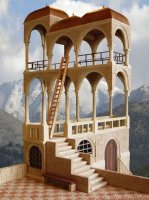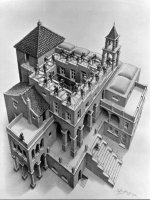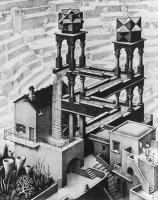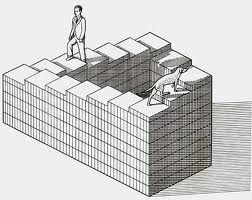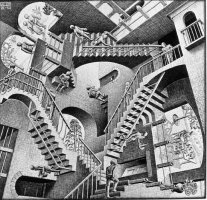Representation of an impossible world by Escher
Maurits Cornelis Escher was not a mathematician but an artist. He lived from 1898 to 1972 in the Netherlands, his homeland, then in Italy, Switzerland and Belgium.
He was involved in the movement of the caricature of science, the pataphysics, and gives paradoxes geometric art form through her drawings that made his reputation.
The sketch below is not from Escher, it was inspired by his work and leads to a garden where Escher would have liked to install his bench to draw ... Click on the image.
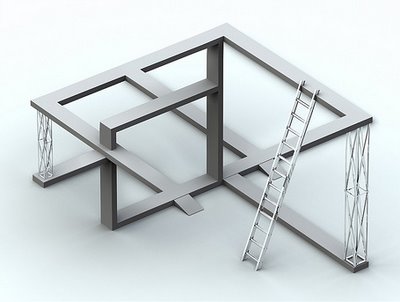
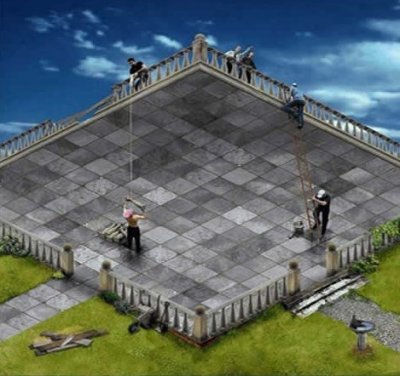
Inspiration
The Penrose triangle was originally designed by the Swedish artist Oscar Reutersvärd, considered a pioneer in the field of impossible objects. This triangle, or tribar, was established in 1934.
The mathematician Roger Penrose popularized this object in 1950 and that's what gave it its name. Escher was then inspired by it to create prints more and more complex, as shown below.
The belvedere
Two step-downs bunks but belonging to different levels.
The house and the stairs
Construction impossible with a staircase which we never find the end.
Waterfall
The waterfall is the source of the canal that ends in the same waterfall.
The secret of Escher
Can we achieve a figure materially impossible? Normally no, but yes and in fact, we have confirmation by clicking the Penrose triangle below. This sculpture was built in Perth Australia.
These three images evince the genesis of the work of Escher. The third engraving is called "Relativity". People moving in three planes of different gravity.
The Penrose triangle has also been practiced in sculptures by Francis Tabary.
Real stuff
- Is it possible to build really the Escher's waterfall? Video.
- Waterfall in a garden. And explanation.
- Impossible motion. Video.
- Anti-gravity illusion. Video.







